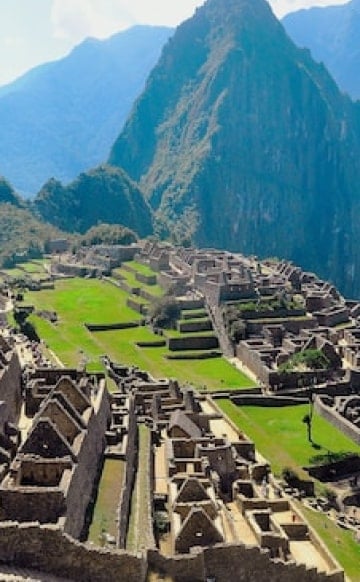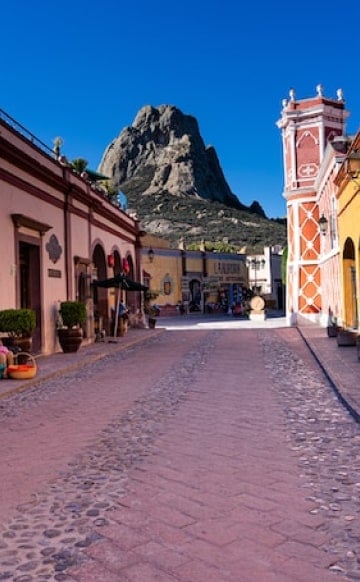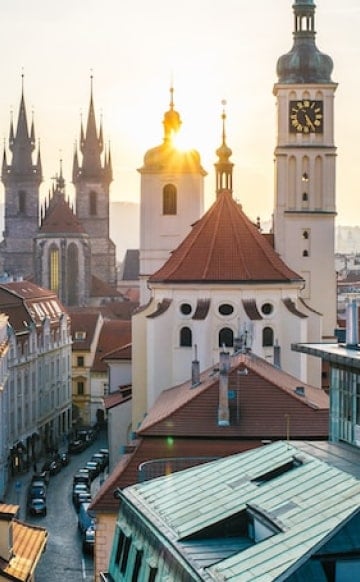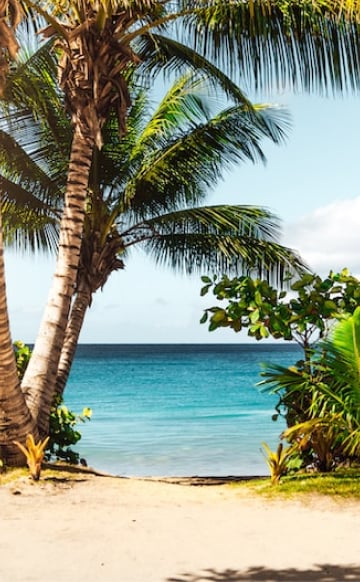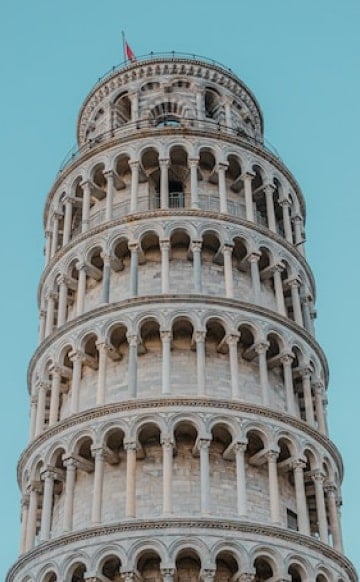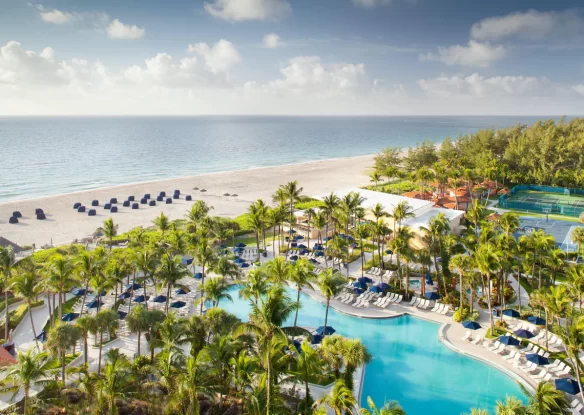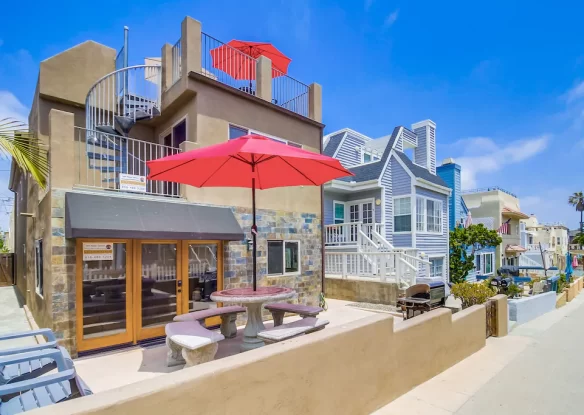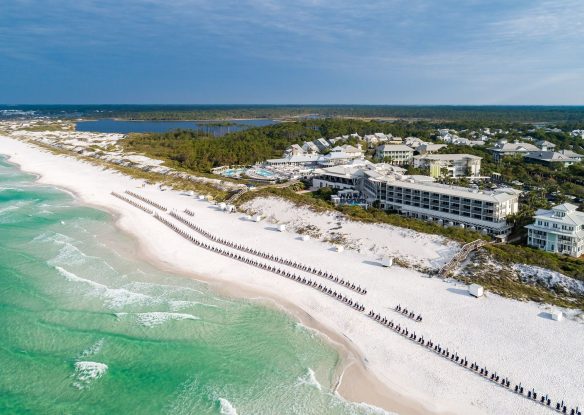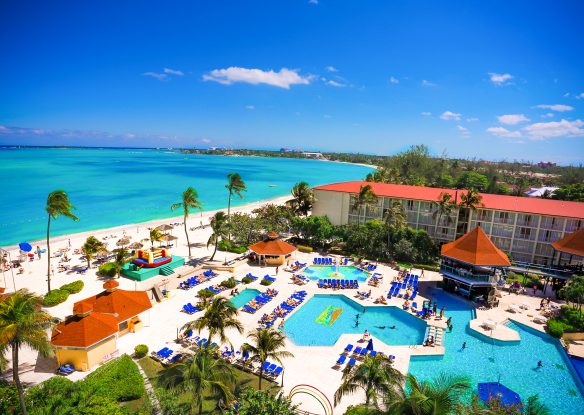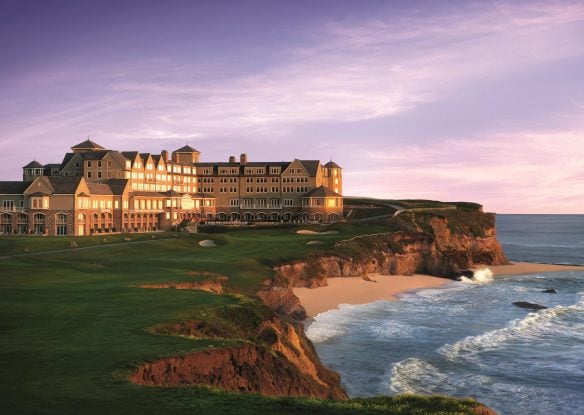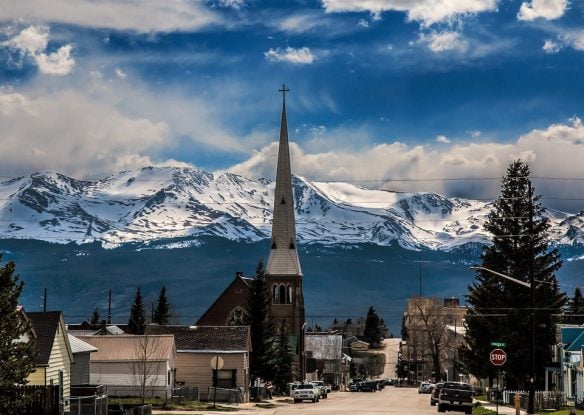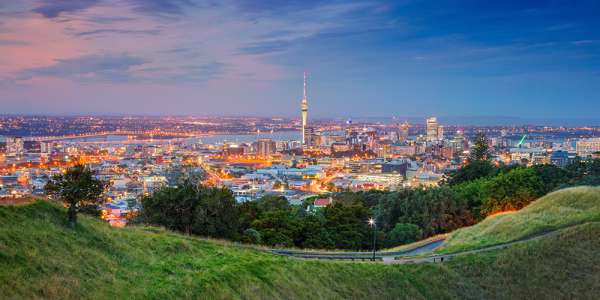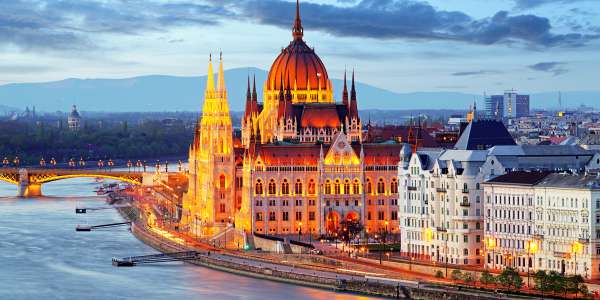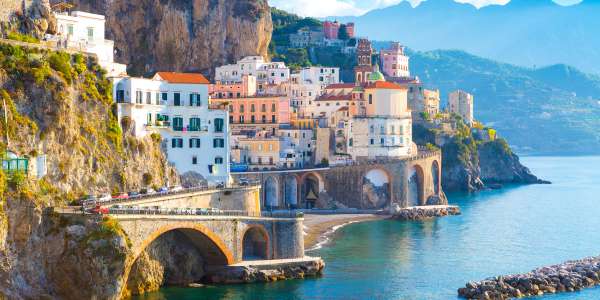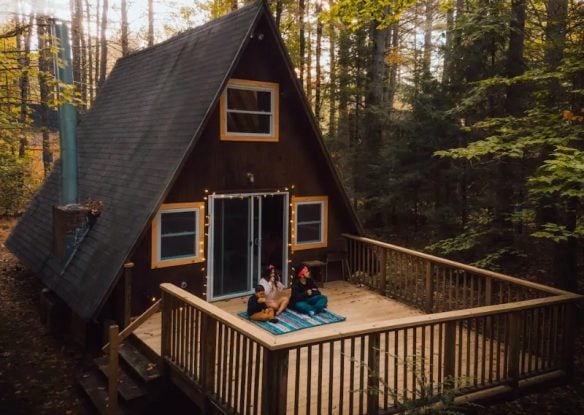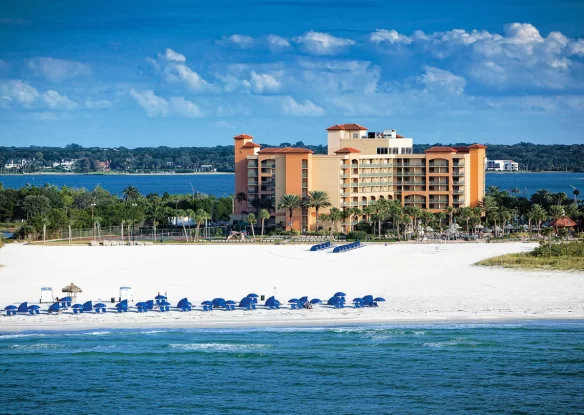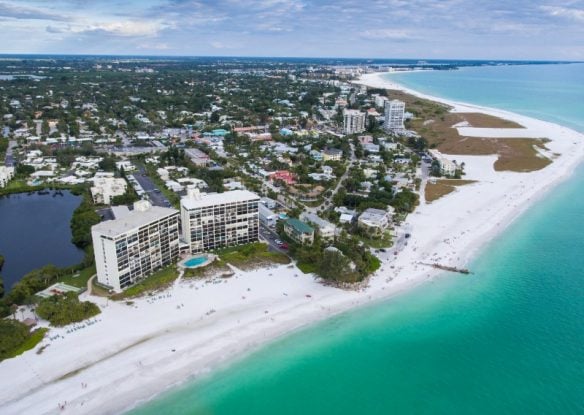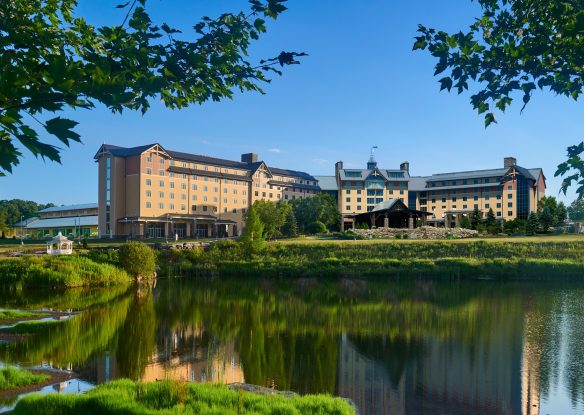If you’re a history buff, you don’t have to travel overseas to explore fascinating sights. While not everything on this list is old in the European sense, dating back thousands of years, the United States is home to a number of ancient sites that pre-date the country’s birth as well as places that have played an important role in American history over the last several hundred years, including these.

The Alamo, San Antonio, Texas
The Alamo is one of America’s most famous historic sites, attracting over 2.5 million visitors each year. This is the place where an epic 13-day siege took place during the Texas Revolution. One can pay homage to the men who fought Mexican General Santa Anna’s army, including defenders like Jim Bowie and Davy Crockett through exhibits that detail the fort’s role during the war, as well as its past as a Native American burial ground and the Mission San Antonio de Valero. While many of the complex’s original buildings are gone, visitors can explore the Long Barrack, which features a museum detailing the history of Texas, and the mission church with displays of battle artifacts, including weapons and paintings.

Cahokia Mounds State Historic Site, Collinsville, Illinois
The largest and most complex archaeological site north of Mexico’s great pre-Columbian cities, Cahokia Mounds State Historic Site is directly across the Mississippi River from St. Louis, Mo. This was the site of the most advanced prehistoric native civilization to have existed north of Mexico, inhabited between 700 and 1400 AD, believed to have a population of up to 20,000 at its peak in the mid-11th-century when it stretched for six square miles. Excavations have revealed that the town, occupied by the Cahokia tribe in the 1600s, was rather sophisticated, with thatched-roof homes surrounding a number of plazas. Other discoveries have indicated there were flat-topped temples and burial mounds as well as religious symbols found on pottery, stones and copper that provide evidence of occasional human sacrifices. Guided tours along with educational programs and an interpretive center are available to the public.

Washington, DC
Washington is paradise for history loving travelers, with practically an endless amount of museums exhibiting art and artifacts from every American era, as well as memorials that enshrine the country’s greatest leaders. This is the home of amazing art galleries as well as dozens of historical landmarks that cover everything from the civil war to civil rights. You could spend years visiting this treasure trove of U.S. history, including the U.S. Capitol, in and around the National Mall, the White House, the Smithsonian Museums, and the Washington Monument. To enjoy a White House tour, book at least six weeks in advance, but if you forget, you can always explore the White House Visitor Center that houses fascinating artifacts like the desk FDR used during his Fireside Chats.

French Quarter, New Orleans, Louisiana
There are few better places in all of America to experience history than in the cobblestone streets of the French Quarter in New Orleans. Take a walk through the district — bounded by the Mississippi River, Rampart Street and Canal and Esplanade — and you’ll view lots of intriguing architecture, like Creole cottages built on stilts, French colonial townhouses draped in ivy and grand antebellum mansions with balconies laced with intricate ironwork. Here you can almost feel the cultures clashing, meeting and merging in this focal point of American history. As the French Quarter is meant to be explored by foot, you might want to start in Jackson Square, with its patch of spectacular moss-covered oaks and striking statue of Andrew Jackson. Stop in at Café Du Monde for its delectable signature beignets and take advantage of a beautiful photo-op at the Spanish Colonial- and Renaissance-style St. Louis Cathedral.

Gettysburg, Pennsylvania
51,000 union and Confederate soldiers died here in July 1863 during the three-day battle at Gettysburg — the bloodiest conflict of the Civil War. It was so traumatic, that four months later, President Abraham Lincoln eulogized the fallen Union Troops in his Gettysburg Address, which would become the most famous speech in American history. The museum and visitor center offers a comprehensive preview, including a film narrated by Morgan Freeman. After a tour of the battlefield, head to the national cemetery at sundown, one of the most revered sites in the nation. This is also known as one of the most haunted places in the U.S., particularly the battlefield, with numerous sightings of ghost soldiers and the sounds of battle heard. Ghostly encounters are also common in the period buildings that surround the battlefield, including the Farnsworth House Inn and at Gettysburg College.

St Augustine, Florida
The oldest continuously occupied European settlement in North America was founded by the Spanish in 1565, after explorer Don Pedro Menendez de Aviles landed on its shores and named them after the Roman saint, Augustine. While Timucua Indians had previously settled here, St. Augustine became the first European settlement, later ruled by the British before becoming part of the United States. Many historic buildings still stand and can be visited today, like the Castillo de San Marcos, the historic city gate and the Plaza de la Constitucion. You can even walk in Aviles’ steps at the place where he came ashore near the Fountain of Youth Archaeological Park just north of Castillo de San Marcos. For a good overview of the city, consider joining one of the many tours, like the Old Town Trolley historic tour. When you’ve had your fill of history, check out the beautiful beaches nearby.

Philadelphia, Pennsylvania
You’ll see the influence of Ben Franklin all over the City of Brotherly Love, including Independence Hall where he and other colonial leaders met and wrote the Declaration of Independence and the Constitution. Of course you can also pay homage to the famously cracked Liberty Bell and bite into a classic Philly cheesesteak in South Philly, but to really understand why this history still matters today, visit the National Constitution Center — an interactive, multi-media museum, the revamped Benjamin Franklin Museum and the President’s House, a recreated look at the one-time home of Washington and Adams, when Philadelphia was the nation’s capital. If you want a more in-depth look at Independence Hall, join the Independence After Hours tour that includes an appearance by Thomas Jefferson and dinner at City Tavern – an 18th-century tavern with award-winning cuisine.

Santa Fe, New Mexico
Santa Fe was settled by the Spanish in 1607, more than a decade before Plymouth Colony was established. It was declared the New Mexico capital in 1610 by Governor Don Pedro de Peralta, making Santa Fe the oldest capital city in the nation. Today, it also claims to have the oldest public building in the U.S., the Palace of Governors, built in 1610, and the oldest community celebration, Santa Fe Fiesta, started back in 1712. Santa Fe is easily explored on foot, where you can wander through the winding streets lined with adobe-style buildings that house boutiques, art galleries, historic sites and museums.

Taos Pueblo, New Mexico
Just a two-hour drive north from Santa Fe at the northern edge of Taos, Taos Pueblo is a set of adobe dwellings, ranging from two- to five-stories tall, with walls that gleam in the sunshine of the high desert. It’s one of a group of settlements in the valleys of the Rio Grande and its tributaries, which have survived to the present day, offer a unique insight into the culture of the first Americans. It’s similar to the settlements of ancient Pueblo peoples at spots like Mesa Verde and Chaco Canyon, and continues to be a thriving community today. This sixth-century-old settlement is still used by the Tiwa-speaking people who live on the adjacent reservation for ceremonial rites, like Deer and Matachines Dances, typically performed to heavy drum beats. The pueblo is open to the public for guided walking tours, shopping and fry bread eating.

San Juan, Puerto Rico
The Commonwealth of Puerto Rico is an unincorporated territory of the U.S., which means U.S. citizens can travel there without a passport. Not only does it offer the quintessential Caribbean experience, including relaxing and enjoying beautiful beaches, but history buffs will love it too. Old San Juan, a National Historic Landmark District, is a walled city of cobblestone streets and Spanish colonial architecture, and the massive fortress of El Morro and governor’s mansion, La Fortaleza, are among Puerto Rico’s most popular attractions. One of its earliest structures, La Casa Blanca, formerly the home of Ponce de Léon’s family, offers interpretive tours. Meanwhile, the 1540 Cathedral de San Juan Bautista, the second oldest cathedral in the Western Hemisphere, contains the tomb of first governor, Ponce de Léon.

Salem, Massachusetts
Salem is home to the oldest continuously operating museum, the Peabody Essex Museum, which opened in 1799 when museums were officially known as a “cabinet of natural and artificial curiosities.” It was a group of sea captains that founded the East India Marine Society with a specific charter provision to collect such specimens, the legacy becoming this fascinating museum that holds 1.8 million pieces of maritime, Asian, African, Indian, and Oceanic art plus historic buildings, including the Qing Dynasty Yin Yu Tang house. Salem was the hub of the China Trade, and once one of the East Coast’s major ports, with its streets still lined by stately homes built for wealthy merchants and sea captains. It also has literary connections as the birthplace and home of Nathaniel Hawthorne, in addition to being the site of the infamous Salem Witch Trials, which can be experienced through re-creations today.

Plymouth, Massachusetts
The village of Plymouth was founded in 1620 and is best known as the site of the landing of the Pilgrims who were fleeing religious persecution in Britain. Visitors can view Plymouth Rock, which marks the spot of their landing – and while there is some dispute about the rock and its significance, it does represent the settlement of New England and the second permanent colony in America. But there is a lot more to see. Hop aboard the Mayflower, a full-scale replica of the ship, complete with exhibits and tours led by costumed guides. At Plimoth Plantation, a living history museum, you can see Plymouth just as it was in the 17th-century.

Jamestown, Colonial Williamsburg and Yorktown, Virginia
These three towns make up Virginia’s “History Triangle.” Jamestown is the site of the first permanent settlement in the Americas, founded back in 1607. At Historic Jamestowne, you can explore the Glasshouse to learn about the country’s earliest industries and see ongoing archaeological discoveries of the fort as well as thousands of artifacts unearthed on display in the Nathalie P. and Alan M. Voorhees Archaearium. Explore a world-class living history museum that re-creates life in Jamestown colony at Jamestown Settlement, and watch history come alive in Colonial Williamsburg, where costumed characters act out the details of life in the early years of America.
Yorktown saw one of the most pivotal battles of the American Revolution. Here, you can step back in time at the Yorktown Battlefield and Visitor Center. The Yorktown Victory Center is a living history museum of the American Revolution, with indoor galleries and exhibits as well as a re-created military encampment outside that depicts life in the military during Colonial times.

Mesa Verde National Park, Colorado
Mesa Verde National Park in southwestern Colorado is home to some of the most well-preserved archaeological sites in the U.S., with nearly 5,000 found within its boundaries, including 600 ancient Pueblo cliff dwellings. Trace the ancient footsteps of ancestral Puebloans who once lived here, including Cliff Palace with its 150 rooms and 23 kivas. The 40-room Balcony House features well-preserved rooms, kivas and plazas that stand as a tribute to those who built and occupied the site in the 13th century.

Boston, Massachusetts
The “Birthplace of the American Revolution” is a city of American firsts, home to the first public park, the first library, first public school and first subway system. On the 2.5-mile Freedom Trail, you can experience some of its most famous landmarks like Faneuil Hall, the Old South Meeting House and the Old North Church, strolling the same cobblestone streets as the revolutionaries and puritans. As strolling the walkable trail is sure to work up an appetite, stop by the Green Dragon Tavern, which has had the likes of John Hancock and Paul Revere as regulars.

Charleston, South Carolina
With its charming cobblestone streets and horse-drawn carriages, Charleston feels like a time capsule. Walk around The Battery, viewing Fort Sumter in the distance, and you might think you really have stepped back into a spectacular antebellum world. Get a glimpse of 19th-century Southern high society by touring the Calhoun Mansion and the Nathaniel Russell House, and view a piece of living history at the McLeod Plantation Historic Site, focused on the lives of slaves who worked here, as well as being the site of a 6th-century oak tree. Charleston offers numerous outstanding dining options too, including McCrady’s, housed in a Georgian mansion where George Washington once dined.

Savannah, Georgia
This grand historic town revolves around magnificent antebellum architecture set alongside the Savannah River among enormous live oak trees draped with Spanish moss. It preserves its past with elegance and pride that can be seen throughout the beautiful mansions, Colonial public buildings and cotton warehouses. Some of the city’s most interesting historical structures can be found at Old Fort Jackson and Fort Pulaski National Monument. Its historic cemeteries are also a great way to discover Savannah’s early history, particularly Bonaventure, which dates back to the 1800s, while Colonial Park Cemetery in the Historic District was established in the mid-18th century and hosts more than 900 graves. A number of the city’s original houses of worship remain intact and are open to the public, like the First African Baptist Church, one of the country’s oldest black churches.

San Francisco, California
While many tourists hum the “San Francisco treat” tune while riding the city’s famed cable cars, San Francisco is truly a treat for history buffs from the architectural achievement of the Golden Gate Bridge to the Presidio military outpost that dates back to the Spanish era and the Officers Club, established in 1776, which recently opened as a museum. If you want to relive the city’s more recent, but especially colorful 20th-century history, take the Wild SF Walking Tour that covers the Beat Generation’s old stomping grounds and the artists of the Mission District.

New York City, New York
While the Big Apple is fantastic for its forward-looking culture, with a multitude of cutting-edge art galleries and theater, it also offers the opportunity for an in-depth look at America’s history. Enjoy theatrical history by seeing a concert at Kings Theatre in Brooklyn, and head to Ellis Island and the Statue of Liberty to explore the Ellis Island National Museum of Immigration and the Peopling of America Center, which extends the story of immigration under the iconic green lady. Trinity Church, overlooking Wall Street, dates back to 1696 when the land was granted for a worship space – the first church service was held in 1698.
The New York Historical Society is a lesser-known historical landmark just across the street from the National History Museum. Its fourth floor is filled with historical artifacts dating from the pre-revolutionary war period and as current as artifacts from 9/11. The museum was actually New York’s first, having been founded in 1804 and is the best resource for anyone who wants to learn about the history of this great city.

Baltimore, Maryland
The famous Fort McHenry is known for successfully defending Baltimore Harbor during the War of 1812 and inspired Francis Scott Key to pen the national anthem. Baltimore offers much to delight the history enthusiast, from the Fort McHenry National Monument and Historic Shrine to the Star-Spangled Banner Flag House, Federal Hill and the Edgar Allan Poe House. America’s history can also be discovered here on national historical trails, tiny row houses and gilded-age mansions. The city is home to its own Washington Monument too, the first one built for the father of our country – and, if you’d like to delve into Baltimore’s literary history, saddle up to the bar at The Horse You Came In On, the last place where its native son Edgar Allen Poe was seen alive in 1849.

